commentary Commentary
Commentary: Why Singapore is ripe for an electric vehicle revolution
But we first need to get our act together on pricing in the carbon costs of regular cars and provide more information on where the charging points are across the island, says the Sustainable Energy Association of Singapore’s Dr Sanjay C Kuttan.
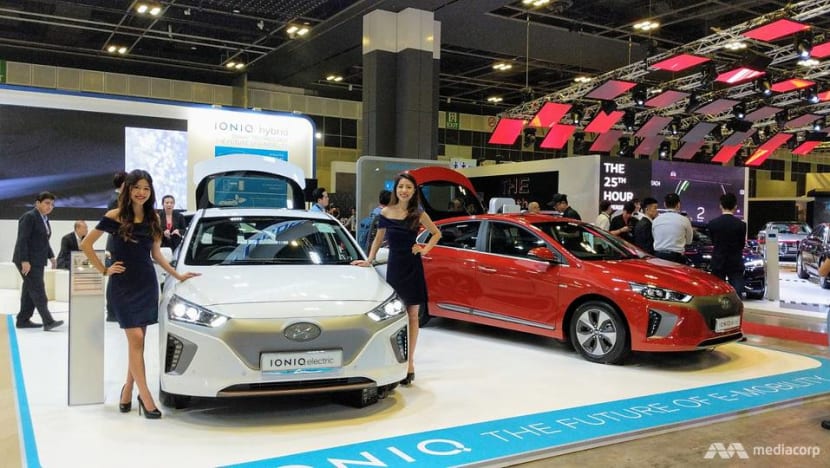
Hyundai's first electric car, the Ioniq Electric, at the Singapore Motorshow. (Photo: Christy Yip)
SINGAPORE: Electric vehicles (EVs) are transport’s next frontier.
As cities mature, they are beginning to recognise the need for greener transportation.
Oslo, the EV capital of the world, has seen EVs account for more than half of all new cars sold in 2018, and is planning to encourage further growth through incentives and restrictions on diesel and gasoline vehicles.
In 2018, EVs saw a 63 per cent year-on-year increase in sales, with more than 2 million units sold globally. Drivers are also spoiled for choice, with 66 new models in total to be launched by the end of 2019, and 101 in 2020, according to a 2018 McKinsey study.
The same can be said of EVs in Singapore, which are gaining some traction. There were 1,036 fully electric cars on the road as of September this year, up from just 12 three years ago, according to the Land Transport Authority.
READ: What is keeping electric cars from gaining greater acceptance in Singapore?
However, there are concerns in Singapore that the price of an EV is still too high.
The reality is that dealers themselves price EVs within the price range of combustion-engine cars in the Singapore market. While EVs could cost upwards of S$400,000, this price range tends to apply to high-end models.
A mid-range model, such as the BMW 225xe, which I drive, was priced around S$174,000 two years ago, while Hyundai and Nissan models could range from S$120,000 to S$140,000.
Hence, EVs can be affordable by local standards.
Consumer education around total cost of ownership over the lifespan of the car versus initial cost of ownership, as well as other purchasing models like leasing must be part of the value proposition to potential EV owners.
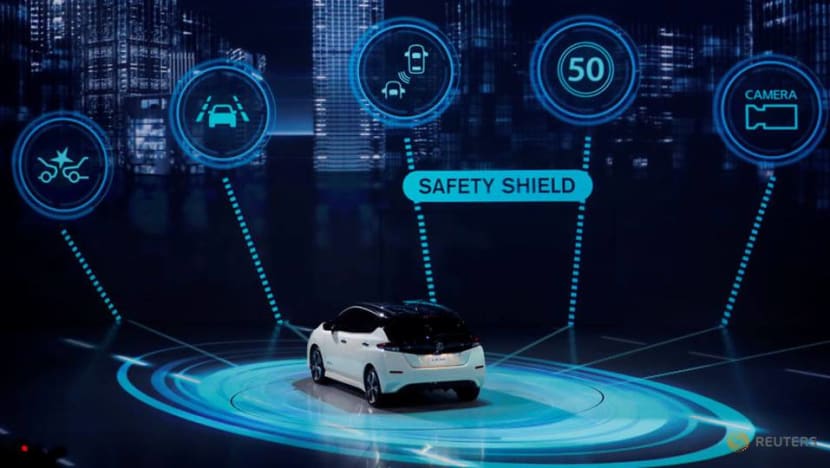
EV CHARGING INFRASTRUCTURE IS BECOMING LESS OF AN ISSUE
Singapore transport is ripe for an EV disruption.
Infrastructure development in Singapore is already racing ahead of EV sales, with both normal and fast-charging options in place.
READ: Commentary: Where are all the electric vehicle charging points?
Shell, which recently acquired EV infrastructure company Greenlots, plans to install 10 EV chargers in selected stations across Singapore. These chargers leverage the strategic locations of Shell’s fueling stations, catering to traffic flow across the island.
This is over and above infrastructure already in place by Greenlots, SP Group, Red Dot Power and Blue SG among others.
INFORMATION ON CHARGING POINTS IS NEEDED
However, an overarching enterprise system is needed to manage all charging infrastructure. We should be able to find information on the charging points’ location and availability on Google Maps or a consolidated platform.
Charging Infrastructure companies should collaborate and have a common payment platform compatible with their different business models to make it easy for EV users.
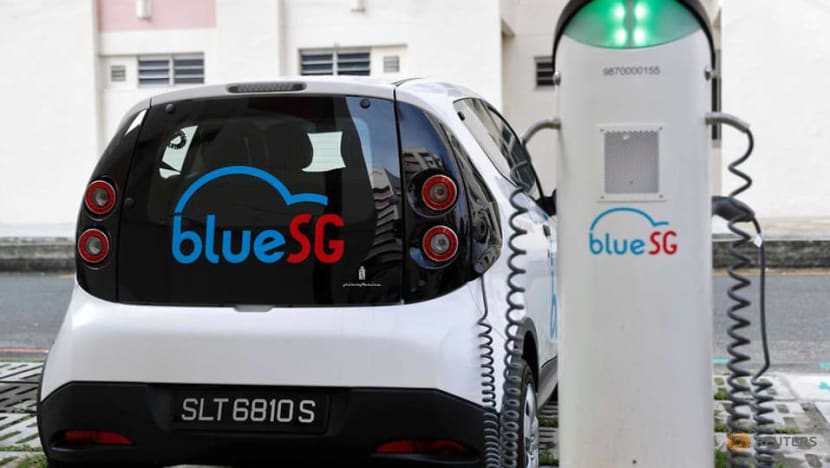
Singapore’s average daily driving distance is 55km, which makes us the perfect city for EVs. A full charge on most battery electric vehicles today, even with the air-conditioner running, should give you at least 120km – if not more.
Easy, predictable daily access to a charging station will reduce the vehicle’s charging time of the vehicle as batteries would not be fully discharged and cars can still run on partial charge.
READ: Commentary: New electric vehicle highway in Australia warmly welcomed
Opportunistic charging coupled with well-distributed and accessible charging infrastructure, especially with direct-current fast-charging, will further allay EV owners concerns about range.
DISTANCE ONLY AN ISSUE WHEN TRAVELLING TO MALAYSIA
For those who plan to cross the border, options for charging are increasing in Malaysia.
For example, Petronas had planned to install 100 green charging stations at their petrol stations by 2018.
Malaysia also has many EV rental companies like COMOS.
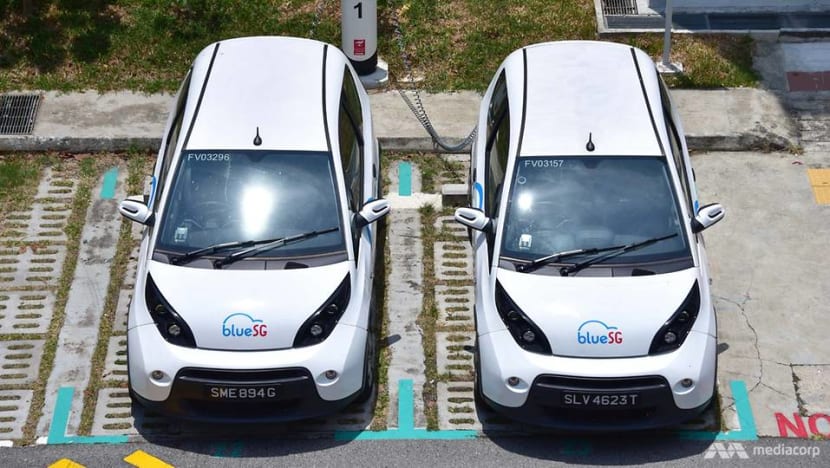
POWER IS NOT AN ISSUE
The Singapore power grid is the most reliable grid in the world, In fact, we are blessed with lots of power – with a power generation sector at almost 75 per cent overcapacity. Distribution grid management will ease concerns around grid constraints.
We have the power grid to supply energy, we have the charging infrastructure to electrify the cars and we have the cars, almost 400 new models by the end of 2023.
Can our electrons get greener? Of course, it can. Singapore’s electricity grid emission factor, which measures the average carbon dioxide emission per MWh of electricity, has improved by more than 20 per cent over the last 12 years and will continue to do so.
We took the first steps a decade ago by changing our power generation fuel to natural gas with improved turbine technology. Then we started solarisation and will hit the 350 megawatt peak (MWp) installed capacity target by 2020.
Furthermore, the Singapore Government recently announced a commitment to make national energy supply more affordable, reliable, and sustainable at the Singapore International Energy Week 2019.
The Government also set a solar target of at least 2,000 MWp by 2030, demonstrating that the decarbonisation of Singapore’s energy system remains a top priority.
READ: Commentary: Here’s how to accelerate and fund the climate action revolution the world wants
The Sustainable Energy Association of Singapore also launched a white paper on accelerating our decarbonisation efforts in Singapore this week at the Asia Clean Energy Summit 2019. So, electrons will become greener and less carbon-intense.
SUBSIDISE MORE TO ACCELERATE EV ADOPTION
The EV narrative is not only centered on reducing carbon emissions; EVs have zero tailpipe emissions.
This means that unlike combustion energy vehicles, EVs emit zero pollutants, promising better air quality for us and our children.
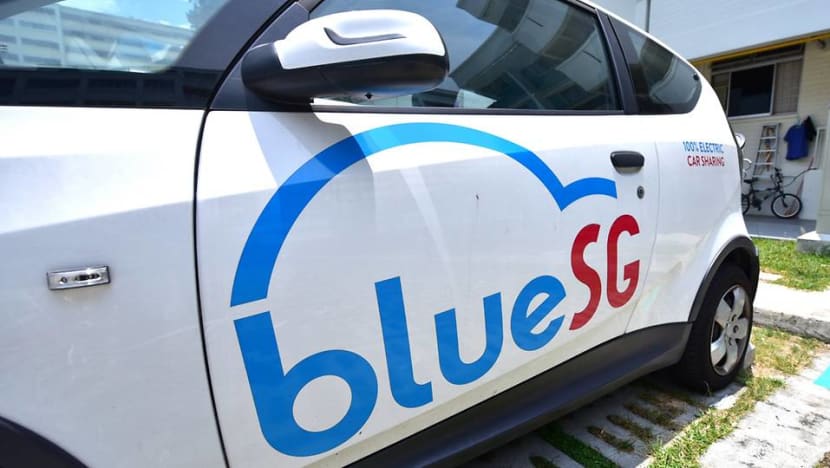
While this concern over the pollutive poison combustion-engine vehicles emit has been addressed to some extent through a new Vehicle Emission Scheme encouraging drivers to switch to cleaner vehicles launched a few years ago, the subsidy quantum given is not sufficient to shift people away from regular cars in significant droves. This should be reviewed further.
EVs need a level playing field where the cost of externalities arising from tailpipe emissions, such as healthcare costs, productivity loss, and so on are factored in.
READ: Commentary: Buying a car has lost its lustre in China
READ: Commentary: Vietnam bets big on a homegrown US$17,000 hatchback
Pricing in these costs will mean the rebates provided under the Vehicle Emission Scheme should be as much as twice the car’s Certificate of Entitlement value.
Furthermore, sound pollution from vehicles in our densely populated housing estates will also reduce dramatically when electrified.
RECYCLING OF BATTERIES
There are also concerns around the EV battery as a source of pollution. In 2018, the City of Vancouver analysed a cradle-to-grave life cycle of an electric vehicle and a comparable internal combustion engine.

They concluded that the EV was almost 100 per cent better in terms of carbon emissions and energy consumption over a 150,000km range. Furthermore, there is now opportunity to use the spent EV battery in the renewables sector by coupling it to solar energy systems.
Singapore recently announced that it was also looking at deploying 200MW of energy storage coupled to solar installations, enhancing the availability of solar power. The used EV battery, while not good enough for vehicle performance, tends to be good enough for power systems and hence has a viable second life.
Furthermore, Singapore’s electronic waste management initiative and the recycling of batteries will help recover components that can be reused.
So, if we truly believe in our aspirations of being a Smart Nation, then with the right charging infrastructure, information on where the charging points are and policies in place, Singapore will truly become one of the first few beneficiaries of the EV revolution.
Dr Sanjay C Kuttan is Chairman at the Sustainable Infrastructure Committee at Sustainable Energy Association of Singapore.















